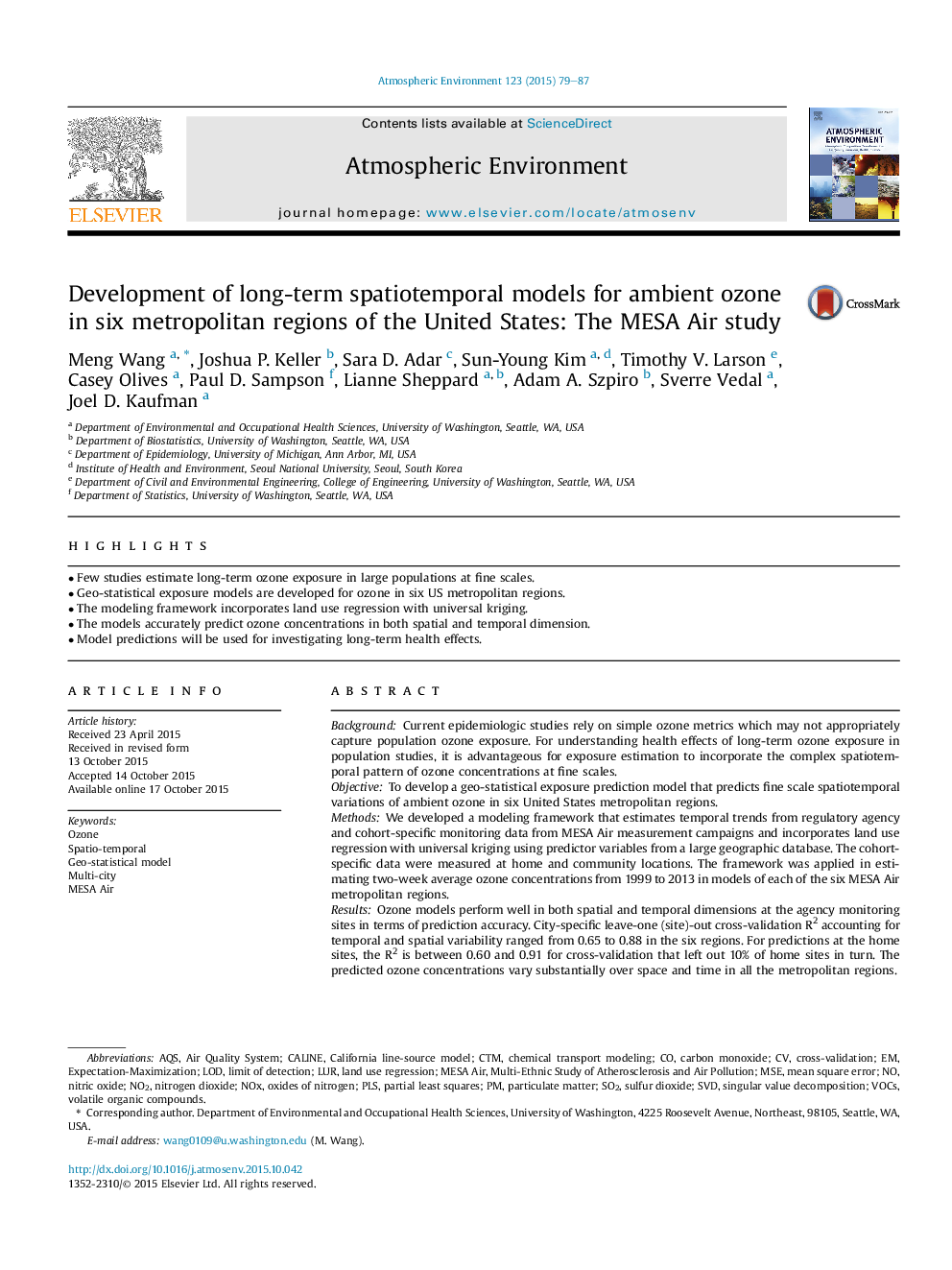| کد مقاله | کد نشریه | سال انتشار | مقاله انگلیسی | نسخه تمام متن |
|---|---|---|---|---|
| 6337509 | 1310937 | 2015 | 9 صفحه PDF | دانلود رایگان |

- Few studies estimate long-term ozone exposure in large populations at fine scales.
- Geo-statistical exposure models are developed for ozone in six US metropolitan regions.
- The modeling framework incorporates land use regression with universal kriging.
- The models accurately predict ozone concentrations in both spatial and temporal dimension.
- Model predictions will be used for investigating long-term health effects.
BackgroundCurrent epidemiologic studies rely on simple ozone metrics which may not appropriately capture population ozone exposure. For understanding health effects of long-term ozone exposure in population studies, it is advantageous for exposure estimation to incorporate the complex spatiotemporal pattern of ozone concentrations at fine scales.ObjectiveTo develop a geo-statistical exposure prediction model that predicts fine scale spatiotemporal variations of ambient ozone in six United States metropolitan regions.MethodsWe developed a modeling framework that estimates temporal trends from regulatory agency and cohort-specific monitoring data from MESA Air measurement campaigns and incorporates land use regression with universal kriging using predictor variables from a large geographic database. The cohort-specific data were measured at home and community locations. The framework was applied in estimating two-week average ozone concentrations from 1999 to 2013 in models of each of the six MESA Air metropolitan regions.ResultsOzone models perform well in both spatial and temporal dimensions at the agency monitoring sites in terms of prediction accuracy. City-specific leave-one (site)-out cross-validation R2 accounting for temporal and spatial variability ranged from 0.65 to 0.88 in the six regions. For predictions at the home sites, the R2 is between 0.60 and 0.91 for cross-validation that left out 10% of home sites in turn. The predicted ozone concentrations vary substantially over space and time in all the metropolitan regions.ConclusionUsing the available data, our spatiotemporal models are able to accurately predict long-term ozone concentrations at fine spatial scales in multiple regions. The model predictions will allow for investigation of the long-term health effects of ambient ozone concentrations in future epidemiological studies.
Journal: Atmospheric Environment - Volume 123, Part A, December 2015, Pages 79-87